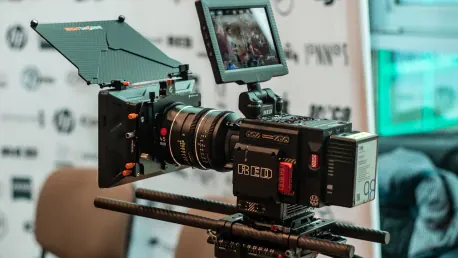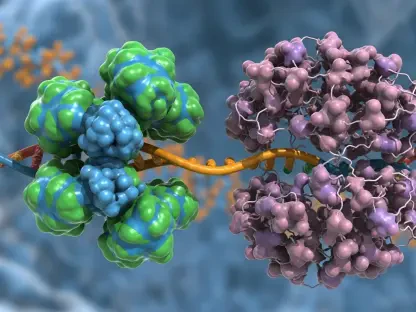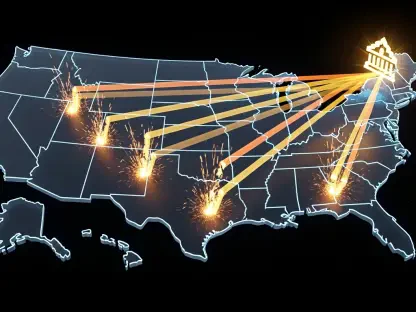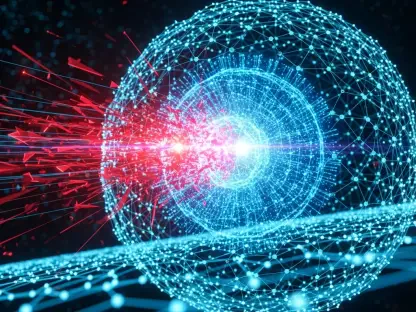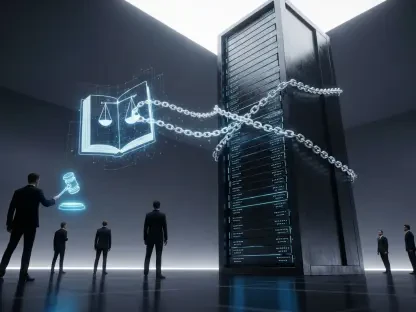In an era where industrial processes are becoming increasingly automated and interconnected, ensuring safety and efficiency remains a paramount concern. Recent advancements in artificial intelligence (AI) offer a promising solution to these challenges, particularly through the real-time video analysis capabilities of neural networks. A team of researchers from the Skoltech AI Center and Samara University has developed an advanced system that can automatically distinguish stages of production processes from video streams. This technology uses self-supervised learning to analyze video data from industrial sites, significantly reducing the need for manual data processing.
Enhancing Safety and Efficiency through Automation
Real-Time Anomaly Detection
One of the key features of the newly developed AI system is its ability to detect deviations from standard operations in real time. This capability is crucial for preventing accidents and maintaining consistent production standards. By continuously monitoring video streams and segmenting them into different operational stages, such as oil changes or component assemblies, the system can highlight critical moments automatically. This eliminates the need for manual monitoring and video processing, saving both time and resources.
The technology utilizes self-supervised learning in neural networks to analyze raw video data independently. This method enables the model to recognize patterns without the need for extensive labeled datasets. After this initial learning phase, the model undergoes further training on a smaller annotated sample to adapt to specific tasks. This approach ensures that the technology can be tailored to the unique requirements of different industrial environments, enhancing its versatility and effectiveness.
Speed and Scalability
The high video processing speed of the AI system supports real-time monitoring, making it suitable for dynamic industrial settings where quick decision-making is essential. This capability not only improves safety by promptly identifying potential hazards but also enhances operational efficiency by streamlining process monitoring. As a result, companies can maintain high standards of production while reducing the risk of accidents and costly downtime.
Maxim Aleshin, a leading engineer at Skoltech, emphasized the system’s ability to operate independently, recognizing patterns in raw video data and adapting to specific tasks efficiently. The elimination of manual video processing means that the technology can be scaled across various production scenarios, from assembly lines to more complex industrial processes. This scalability ensures that the benefits of AI-driven video analysis can be realized across a wide range of applications.
Broader Implications for Industrial Safety
Integration with Smart Surveillance Systems
The technology developed by Skoltech and Samara University has broader implications for industrial safety and process optimization. By integrating the AI system into smart surveillance systems on industrial sites, companies can enhance their overall safety and intelligence. This integration allows for continuous monitoring of production processes, ensuring that any deviations or anomalies are promptly identified and addressed.
Svetlana Illarionova from Skoltech AI Center highlighted the potential for expanding the range of supported production scenarios. The team plans to test the system in real-world conditions to ensure its reliability and effectiveness in various industrial environments. These efforts aim to extend the application’s potential beyond traditional assembly lines, offering solutions for diverse production processes that require meticulous monitoring and control.
Toward a Safer and Smarter Future
The overarching trend in industrial safety is the enhanced capability of neural networks to self-learn and adapt within production environments. This technology allows for the autonomous management of vast amounts of video data, ensuring both safety and efficiency. By leveraging real-time anomaly detection and self-supervised learning, the AI system developed by Skoltech and Samara University represents a critical advancement in industrial AI applications.
The research introduces a transformative approach to video analysis in production environments. By enhancing safety and efficiency through real-time monitoring and automation, the technology sets a new standard for industrial processes. The ability to autonomously manage video data and detect anomalies positions this AI system as a valuable tool for companies looking to improve their safety protocols and operational standards.
Future Directions and Considerations
Expanding Applications
Looking ahead, the team plans to expand the range of applications for this AI technology. By exploring new production scenarios and integrating the system into various industrial environments, the researchers aim to demonstrate the technology’s versatility and effectiveness across different settings. This includes testing the AI system in conditions that mimic real-world challenges, ensuring it can adapt to the ever-changing demands of industrial processes.
The ultimate goal is to create a universal solution that can be applied to a wide range of industrial activities, from manufacturing to more complex production sequences. This adaptability will enable companies to implement AI-driven video analysis across their entire operation, optimizing safety and efficiency at every stage of production.
Continuous Improvement
The team at Skoltech and Samara University is committed to continuous improvement of the AI system. This involves refining the neural network models, enhancing their learning capabilities, and incorporating feedback from real-world deployments. By staying at the forefront of AI research and development, the researchers aim to provide cutting-edge solutions that meet the evolving needs of the industrial sector.
The focus will be on improving the system’s accuracy, reliability, and speed, ensuring it can handle increasingly complex tasks. This includes developing new algorithms for better pattern recognition and anomaly detection, as well as optimizing the system for faster processing times. Through these efforts, the researchers hope to push the boundaries of what is possible with AI in industrial safety.
Paving the Way for Innovation
In an age where industrial processes are becoming more automated and interconnected, ensuring safety and efficiency is paramount. Recent innovations in artificial intelligence (AI) offer promising solutions to these challenges, particularly through the real-time video analysis capabilities of neural networks. A research team from the Skoltech AI Center and Samara University has created an advanced system capable of automatically identifying various stages of production processes from video streams. This cutting-edge technology employs self-supervised learning to scrutinize video data from industrial sites, drastically reducing the necessity for manual data processing. This not only enhances efficiency but also minimizes human error. The system’s ability to provide accurate, real-time insights into production stages represents a significant leap forward in industrial automation. By harnessing the power of AI, the industry can move towards safer and more efficient operations, paving the way for future innovations in automation and data analysis.
